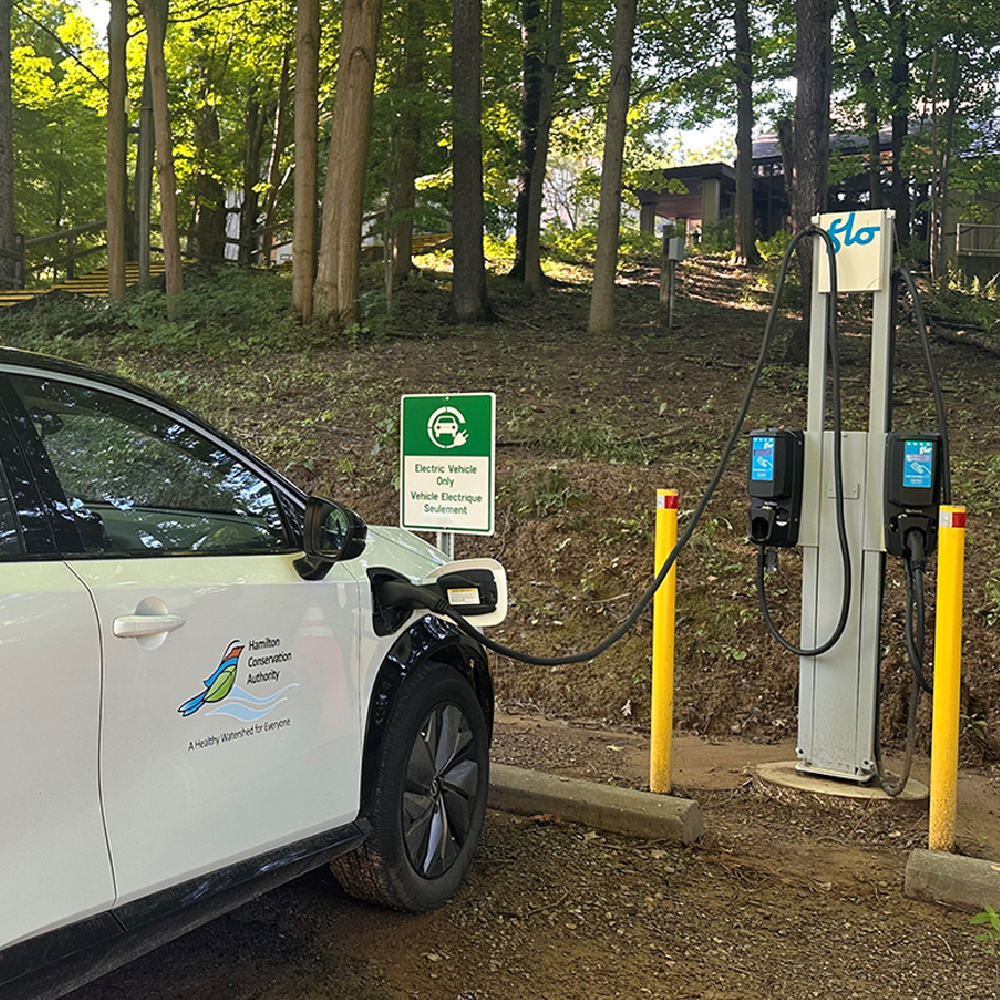Do EV Drivers Charge More in the Cold? FLO’s Data Analysis of Winter Impacts on EV Charging Habits
As recent cold weather swept through North America, the FLO data team wanted to understand how electric vehicle (EV) drivers use public charging during cold weather. We’ve heard a lot of reasons why EV drivers might charge more and some reports of longer lines at some charging stations, but what does the data say? Our team looked at a subset of FLO’s over 100,000 EV charging stations deployed across North America to help answer the question: do drivers charge longer during cold weather? And how is this data useful for charging station owners and drivers?
Our preliminary findings (detailed analysis below) suggest that in our study area (public chargers in Greater Montreal):
- EV drivers DID charge for longer in cold weather (although it’s not a huge difference)
- EVs are taking on more energy (kWh) in cold weather
- Correlations hold for both L2 and DC public fast charging stations
The finding that more energy is used is consistent with findings e.g. from the US Department of Energy that gas and electric vehicles are less efficient in cold weather. The finding that drivers are charging for more time could be explained both by the need for more energy, and because vehicles may take longer to warm up their batteries to be able to accept the highest rates of charge. There are some great studies in this area by the likes of Recurrent Auto specifically looking at one make of EVs (Tesla) charging in winter conditions, which found longer charging times and Geotab, which has extensively studied impacts on EV range and charging in cold weather conditions. Both articles point out that pre-conditioning batteries can help mitigate time increases for fast winter charging.
Scope of the Analysis
We narrowed our analysis to Greater Montreal, a region with a high density of charging stations (and one that dependably has cold weather in winter!). By focusing on this specific geographic area, we aimed to minimize variations in weather conditions and regional influences on customer behavior. The analysis concentrated on 2,230 public charging stations that were operational over the 365 days of 2023. The study stations were categorized based on the average temperature in Montreal. We excluded a few days of outliers, specifically those with extreme temperatures (either excessively high or low), to ensure that our results are not biased.
 |
 |
Winter Impacts Charging Patterns
Our analysis wave reveals a direct correlation between lower temperatures and extended charging sessions, regardless of whether the stations are level 2 or 3 (DC fast). Days with temperatures dropping to -5°C (23°F) or lower witnessed an average extension of about 25 minutes (or 14%) compared to milder days above 10°C (50°F). Notably, this prolonged duration is accompanied by a roughly proportional increase in energy consumption (an increase of 2.7 kWh, reflecting a 17% rise), emphasizing the impact of winter on both charging duration and energy transfer.

Site Host Strategies
Implications for site hosts (people buying and deploying charging stations):
- Deploy redundant stations based on WINTER (cold weather) estimates–make sure that when you’re planning your site, you are factoring in your anticipated winter dwell times, which might mean having more stations.
- Plan your site maintenance with winter in mind – make sure you’ve got snow plowing and regular inspections planned to ensure you aren’t disappointing your customers when they need to charge more and longer.
- Choose wisely – Not all charging stations are certified to -40°C (-40°F) but having robust cold-weather-ready infrastructure can make all the difference to EV drivers who need to charge in the cold.
Will I lose a lot of EV range in cold weather?
Driver Guidelines
Implications for EV drivers
- Winter conditions do make a difference, so make sure you’re familiar with cold weather EV driving tips.
- Plan your trips! Make sure to check the FLO app to ensure you’re headed to the right station to charge.
- If your vehicle has a battery pre-conditioning function, this can help your battery accept a higher rate of charge (and reduce your charging time). Check your vehicle manual for more information.
- Always check the station to ensure it’s safe to charge and be assured that FLO stations are ready for the cold weather.
- When it’s really cold out, preheat your EV. Plug it in and warm it up before setting off. This way, you’ll take to the road with your car “preconditioned”, i.e. already at the ideal temperature, and using energy from the grid and not from your battery.
Is it safe to charge if there is water, snow or ice on the connector?
Why the Long Charge?
This is a preliminary analysis. We’re confident in the numbers on time and energy dispensed, but we don’t claim to know exactly why these differences occur. Some of the explanations we’ve considered are as follows, and we’d love to hear your feedback if you think we’ve missed any possible causes. Our experience tells us it’s likely to be a combination of factors, with cold weather fuel efficiency impacts the most significant.
- Lower fuel efficiency in cold weather: This is the most likely factor. The US DOE notes that all vehicles lose fuel efficiency in cold weather. In EVs, this is especially because of heating needs. This can be partially mitigated by pre-heating vehicles while charging, choosing vehicles with heat pumps (more efficient) and generally following cold weather driving tips.
- Deferred charging: The external temperature might play a significant role in shaping consumer behavior. In colder conditions, people may prefer to avoid staying indoors as much as possible, leading some, with access to home charging to defer EV public EV charging until it becomes absolutely necessary and rely more on home charging.
- Rate of charge at lower levels may be higher: A number of resources have discussed how a cold battery is slower to accept a charge, which, other things being equal, might be assumed to cause the time spent charging to increase disproportionately to the energy transferred. As discussed above, some drivers address this via battery pre-conditioning for fast charging. Another complicating (but interesting) factor that may play a role here is that vehicles charge at different rates depending on where they are in their “charging curve”. In some cases, vehicles take on more energy if they are starting from a lower rate of initial charge. So, if vehicles are coming to public stations at lower initial charging states than in warm weather, they may both take longer to charge, but also increase overall energy transferred.
As we wrap up our exploration into the fascinating world of winter EV charging patterns, one thing is certain – the cold weather doesn’t just impact the temperature outside; it leaves its mark on how we charge our electric vehicles. When planning for colder weather, adaptive strategies are important for maintaining a smooth and reliable charging experience in all seasons.
Let us know how you adapt your charging habits when the thermometer takes a nosedive in the comment section of our social media, and let’s build a community of savvy winter EV drivers together! One thing for sure, a little cold weather doesn’t stop EV drivers in Montreal – especially when they’re armed with EV-charging knowledge and a full battery!























